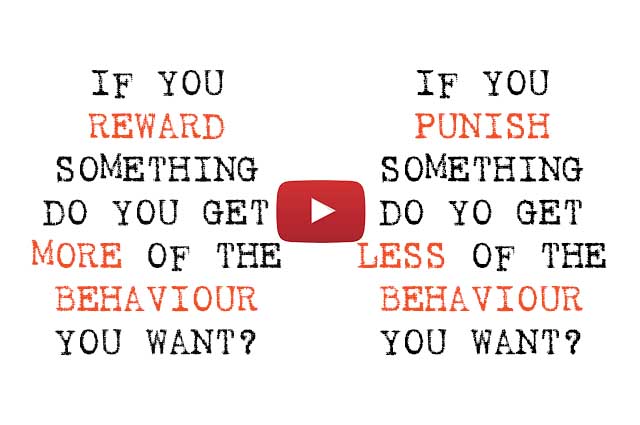Agility? We tried it! Does not work! – Part 2
“Agility for the sake of agility” is not always a good idea and can even become dangerous in some cases. The first article of my small series about agility in companies was about the question if agility is the right approach for organisations and if so, which specific approach could fit to which situation. The second part deals with typical problems during the introduction and implementation of agility. Of course, I will not provide you with a universal solution or a recipe for successful agility, but I will certainly give you one or two impulses.
But be careful: the contribution may again contain traces of irony!
You just feel (still) very well: But don’t wait too long …
When is the right time to deal with agility as an organisation? If you discover (e.g. with the help of the Stacey matrix and rhythmic eye-catching) that your current market is (still) not very dynamic and that the development of successful products is (still) easy to plan, then you should consider very carefully whether you should really change something in such a situation. On the other hand, in such a situation it is a good idea to invest in the future because you can (still) afford it and business is going well. If this is no longer the case, then it will be hectic and painful and it is anything but certain that the adjustment will be successful. But this is anything but easy in practice! After all, how do your employees, your colleagues, feel when you seem to announce a major change without need?
He was certainly on such a great training course and is now mega inspired … oh, that will pass again!
The head knows: In good times you should prepare for bad times, so save or invest or learn. But unfortunately that usually contradicts our intuition:
Why should we change anything now? Everything is going well! Haven’t we just completed the most successful year in our company’s history? Never change a running system!
If agility in your company encounters such reactance, you should not expect great success!
So what should you do? Wait and see? That can certainly be a valid strategy. The good news: Sascha Lobo and Kathrin Passig have impressively worked out in their wonderful book “Getting things done – without a spark of self-discipline” that some problems/topics actually settle themselves on their own, if or precisely because you do NOT take care of them. The bad news: Unfortunately, this is rather NOT a good strategy when it comes to the core business, at least not a responsible strategy.
I don’t want to accuse anyone at Nokia of explicitly procrastinating against the iPhone and Android. But as an outsider I got the impression: In 2007, shortly before the release of the first iPhone, an employee of Nokia’s research and development department in Ulm answered me that they were quite relaxed, that they didn’t believe in a great success of touch control, that the device couldn’t even copy & paste. And even if it did: All the technologies are in the drawer and we can react at any time if necessary. The rest is history …
I’m always happy to tell this anecdote, but I’m afraid it’s really not enough to trigger a sense of urgency in the listeners, which is often mentioned as a prerequisite for successful change.
Sure, they missed it! But it won’t happen to us, we know. Besides, we still have enough time!
But how do you catch the right time? Not too late and not too early? In such a way that one already feels the hot breath of the threatening disruption coming up? If there were a simple formula, it wouldn’t take tons of books on change and transformation and thousands and thousands of consultants. At the risk of repeating myself, it is and remains a complex challenge.
Nevertheless, I would like to give you two impulses:
- First, the more complex the situation, the more complex the solution system should be. (According to W. Ross Ashby.) So: Talk to others about it. With your colleagues, with your team, with your department, with the whole organisation, with external stakeholders and experts. For example, by inviting to an Open Space to discuss the future frankly. Not just once. Several times.
- Second, instead of waiting for fear and pain to drive change, you could try to develop a positive vision for the future. Ideally again together with others (see first impulse). And ideally without belittling the system that has been successful to date.
Perhaps you will create playgrounds and experimental spaces where new things can emerge! Ideally, you will find such an aspect, an innovation, where agility is already worthwhile for you today. Then you can try agility on this topic and learn from it. Although this also involves dangers – I will deal with this in the next chapter.
You tear up your organisation: Agility against each other cannot be!
I had already mentioned it in the first part as an option and at the same time warned against it: If you “introduce” agility in only one part of your organisation and leave the rest of the organisation as it is, so to speak “protect” it from this change, then you are faced with a true Herculean task! Good luck with that!
If you separate the two areas as much as possible, as is often the case with agile “labs” (preferably also locally: in hip startup cities, far away from the headquarters of the company), you minimise on the one hand any friction losses, but on the other hand also the opportunities to learn from each other. You have practically two disjunctive organisations, not under the same roof, rather on the same site (if any). And who goes to a neighbouring building if you don’t necessarily have to?
Almost inevitably, the cultures in both sister organisations develop independently of each other, probably apart. In the worst case, deeply rooted mutual mistrust develops.
Do they even work there or do they just stick coloured notes on the windows all day long?
If it should make sense later to “agilise” further parts of the company, then you should not be surprised if learning from the agile part of the company works just as well as the 1:1 implementation of the Spotify model (or the ING model or any other copy template for agile organisation models), namely not at all!
So you’d rather not separate the two parts too much?
That’s not so trivial either, unfortunately. A few years ago the “bimodal IT” or the “IT of two speeds” was a much discussed model. I think this is a rather risky idea. It seems very difficult to me to establish two systems next to each other, under one roof and yet organisationally separated from each other and to find a good balance.
I have experienced both that the small agile cells were simply not taken seriously by the rest of the organisation and were only allowed to work on topics that were not really relevant to success, with which one could neither really fail nor really become successful.
And I also experienced the opposite situation: that the exciting topics suddenly only ended up with the agile teams, that you had to participate in order to be at the forefront and be able to make a career. The remaining non-agile areas were – to put it bluntly – regarded as a “legacy” to which you can give the boring tasks, as long as you have enough time to wait.
Whatever happens is complex and hardly predictable, but in my experience there is always the danger of a two-tier society. A “we versus you” instead of a common “we” is neither a good idea for the entire company and the parties involved, nor does such a conflict have anything to do with agility in the sense of an agile attitude and respect.
Of course, this does not have to happen. There are certainly organisations in which two or more systems exist alongside each other on an equal footing and well balanced.
But from my point of view this is not necessary at all!
Try to understand agility as an attitude and not as a method or process model. And an agile attitude, in my opinion, involves using the appropriate approach and methods depending on the topic/problem/goal. So also, for example, a waterfall procedure with a 2-year plan, if this makes sense in the concrete case. The common basis are agile values and principles. And in particular respect in dealing with each other and openness, especially with regard to the sensible choice of methods and instruments.
If everyone in the company thinks and acts agilely (“being agile”), if non-agile methods and procedures are not forgotten but belong to the repertoire, then you don’t need to deal with the stress of two systems under one roof.
You just can’t let go, Part 1: Beware of the inertia of old habits!
The previous paragraph mentioned agile attitudes, values and principles. It’s so easy to write and talk about, but it’s so hard to achieve.
How often have I had the impression in the past, in workshops and discussions, in simulations and reflections, that my interlocutors had really understood agility. But then comes everyday life. And the inertia of old habits is a very subtle force. You hardly feel it yourself. But it draws us steadily and almost irresistibly back into old habits. And that’s a good thing: our brain would be completely overwhelmed without habits and automatisms!
In keeping with the upcoming turn of the year, I would like to dare a somewhat different comparison and put up the thesis:
Becoming really agile is much more difficult than quitting smoking!
Every year thousands and thousands of smokers decide to stop smoking after the turn of the year. And most fail.
Why is that so? Let us ignore the physical dependence once, which is overcome after few days. I am sure that most of them fail because they fall back into old habits (sometimes even after months), because they get into situations in which they used to smoke.
And when smoking it is comparatively easy to notice this action: Lighting a cigarette and inhaling the smoke can hardly be confused with anything else.
With the agility, i.e. in the interaction with my employees, with my colleagues, this is much more difficult, in my opinion: How easy it is to make a decision yourself as quickly as usual, instead of handing it over to the self-organisation of the team, as recently agreed. And if nobody pays attention to it and nobody gives me the feedback that things should be different in the meantime, then I probably don’t notice it at all, because I’ve been used to it for years.
So please don’t always assume active sabotage if someone doesn’t abide by new rules. Most of the time he or she just doesn’t notice that the inertia of old habits has triumphed again.
So what can you do to get rid of old habits and become really “agile”?
An admittedly very radical measure can help: “cold withdrawal”! In the context of an organisation this means: to abolish all previous structures (roles, teams, committees, processes, workplaces and rules etc.) as far as possible. This forces one to question everything anew and to explicitly regulate it anew. Then there is no net that catches me, no habitual situation in which I can simply fall back on old habits. That’s exhausting but effective.
Former smokers certainly know that: Many people find it easier to quit smoking on holiday, in new and unfamiliar surroundings, with many new impressions. But even after three smoke-free weeks on holiday, it is still difficult to remain smoke-free in everyday life. The rarer I get into familiar situations, the greater the chance to forget old and unwanted habits and develop new, desired routines. So it’s better to stay on holiday forever. 😉
In addition it needs courage! (And that is by the way already again one of these agile values …)
- Rather focus on the benefit and the profit than on the loss through the change! For everyone involved. Yes, that’s exhausting and won’t always work immediately!
- Create new structures that enable new experiences and encourage new habits. (In my opinion Scrum is so widespread because of the rituals.)
- And give someone the task (and the necessary possibilities) to accompany this process and to pay close attention to where old habits still emerge or reappear. Talk about it regularly. Learn from relapses, adjust your tactics and start the next attempt.
To return to the analogy: Even the fewest smokers manage to quit in the first attempt!
Such a change process takes a long time. And it gets really dangerous when you think you have made it and your attention drops. Because even after months without a cigarette, smokers come across a long forgotten habit in surprise (e.g. the first glass of mulled wine at the Christmas market) and intuitively reach for the cigarette pack (which hopefully can no longer be found in the coat pocket).
In the company such an event, which is rather rare and always surprising, is perhaps the annual financial statement – over months new habits have established themselves and suddenly it becomes quite surprisingly hectic and quite intuitive to pick up old ones again.
So if you take it seriously and wonder why old habits remain so robust even though your staff have all the freedom to reorganise themselves, you should think like an addict: perhaps a “cold withdrawal”, the targeted use of “substitute drugs” and the subsequent accompaniment by “therapists” or participation in a “self-help group” can be helpful tactics for you and your organisation.
You order agility: Sorry, but how absurd is that?
I hope I don’t have to write much about that: Ordering agility is obviously a contradiction in terms! And yet it happens again and again, probably even mostly with good intentions. After all, you expect clear instructions from the company’s leaders and executives, don’t you? But it doesn’t work any more than the command: “The next hour you are creative now! I expect at least 10 disruptive product innovations!
First of all, such an order shows that those who pronounce it probably have not really understood agility themselves: Because agility is based, among other things, on self-organisation, on empowerment and trust. Agility works on the basis of intrinsic motivation of all participants and intrinsic motivation is made possible and promoted by “Purpose”, “Mastery” and “Autonomy” as Dan Pink points out in his book “Drive!
You can watch a video about “The surprising truth about what motivates us” here:
On the contrary: If something doesn’t work out, if something goes wrong, then everyone can always lean back and talk their way out: “I said it right away, it wasn’t my idea at all!” And how agile is that?
So what can I do as managing director, board member or in a similar position? A few thoughts:
- I give orientation and try to develop a positive vision, for which we stand for agility (“Purpose”).
- I create clarity about freedom, ensure empowerment and thus enable self-organisation (“autonomy”).
- And I create the framework conditions so that one can live and experience this very concretely, so that learning and development becomes possible (“Mastery”).
- I let go myself and reinvent my own role: from the decision maker to the decision facilitator and companion of this development.
- And above all: I invite instead of ordering!
Admittedly, it may take a little longer for someone to really dare to feel the change. So don’t wait too long with the first steps …
Outlook
I hope I was able to give you some hints in this second part about why agility might not work for you the way it should, and maybe some helpful impulses about what you might change. And I am well aware that the individual aspects are not consistent – welcome to the complexity and ambiguity of reality!
While writing I had some more thoughts on this topic. So it is not over yet. Be curious.
Notes:
And here you will find additional parts of articles on Agility? We tried it! Does not work!

Heiko Bartlog
Heiko Bartlog has more than 25 years of experience in projects, as a consultant, trainer, coach and entrepreneur, covering many different areas. As a ‘host for co-creation’, he supports organisations on their path to good cooperation and successful development. His repertoire includes approaches such as Scrum, Effectuation, Lean Startup, Management 3.0 and Liberating Structures. As a ‘mentor for mental fitness and vitality,’ he supports leaders in unlocking their potential.



